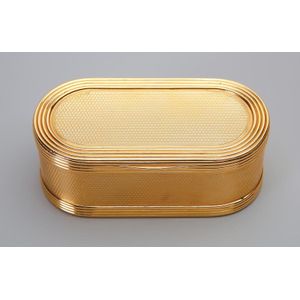Bold Heriz Carpet with Oak Leaf Design
You must be a subscriber, and be logged in to view price and dealer details.
Subscribe Now to view actual auction price for this item
When you subscribe, you have the option of setting the currency in which to display prices to $Au, $US, $NZ or Stg.
- Oak - Native to Europe and England, oak has been used for joinery, furniture and building since the beginning of the medieval civilisation. It is a pale yellow in colour when freshly cut and darkens with age to a mid brown colour.
Oak as a furniture timber was superceded by walnut in the 17th century, and in the 18th century by mahogany,
Semi-fossilised bog oak is black in colour, and is found in peat bogs where the trees have fallen and been preserved from decay by the bog. It is used for jewellery and small carved trinkets.
Pollard oak is taken from an oak that has been regularly pollarded, that is the upper branches have been removed at the top of the trunk, result that new branches would appear, and over time the top would become ball-like. . When harvested and sawn, the timber displays a continuous surface of knotty circles. The timber was scarce and expensive and was used in more expensive pieces of furniture in the Regency and Victorian periods. - Herati Design in Persian Carpets - The Herati design has been used in Persian carpet weaving for centuries and is considered a classic. It consists of a repeating pattern of a central diamond or rhombus, surrounded by four curled leaves or petals, with a small flower or rosette in each of the four corners.
The design is sometimes also referred to as the fish pattern, due to the resemblance of the curled leaves or petals to fish, or as the mahi pattern, which means "fish" in Persian. It is believed to have originated in the Herat province of Afghanistan, which was a major centre of carpet weaving in the 19th century.
In addition to its aesthetic appeal, the Herati design also has symbolic significance. The central diamond or rhombus is often interpreted as representing the fish's eye, while the curled leaves or petals represent fish, water, or vegetation. The small flowers or rosettes in the corners are thought to symbolize the four seasons or the four elements.
This item has been included into following indexes:
Visually similar items

A George IV gold snuff box, Alexander James Strachan, London 1824, the oblong gold box with engine-turned cover, sides and base within plain wide reeded borders, 9.5 cm long, 200 gms

Andris Jansons 'Lake Alexandrina' oil on board, signed lower right, 24 x 35 cm

A pair of Georgian blown wine glasses with red and white spiral enamel twist, knopped stem and bell shaped bowl. Pontil mark. Height 15.5 cm

A north Indian marble sculpture of Nandi 18th/19th century Sensitively modeled as a seated caparisoned bull looking forward intently, 39.5 cm high, 52 cm wide
